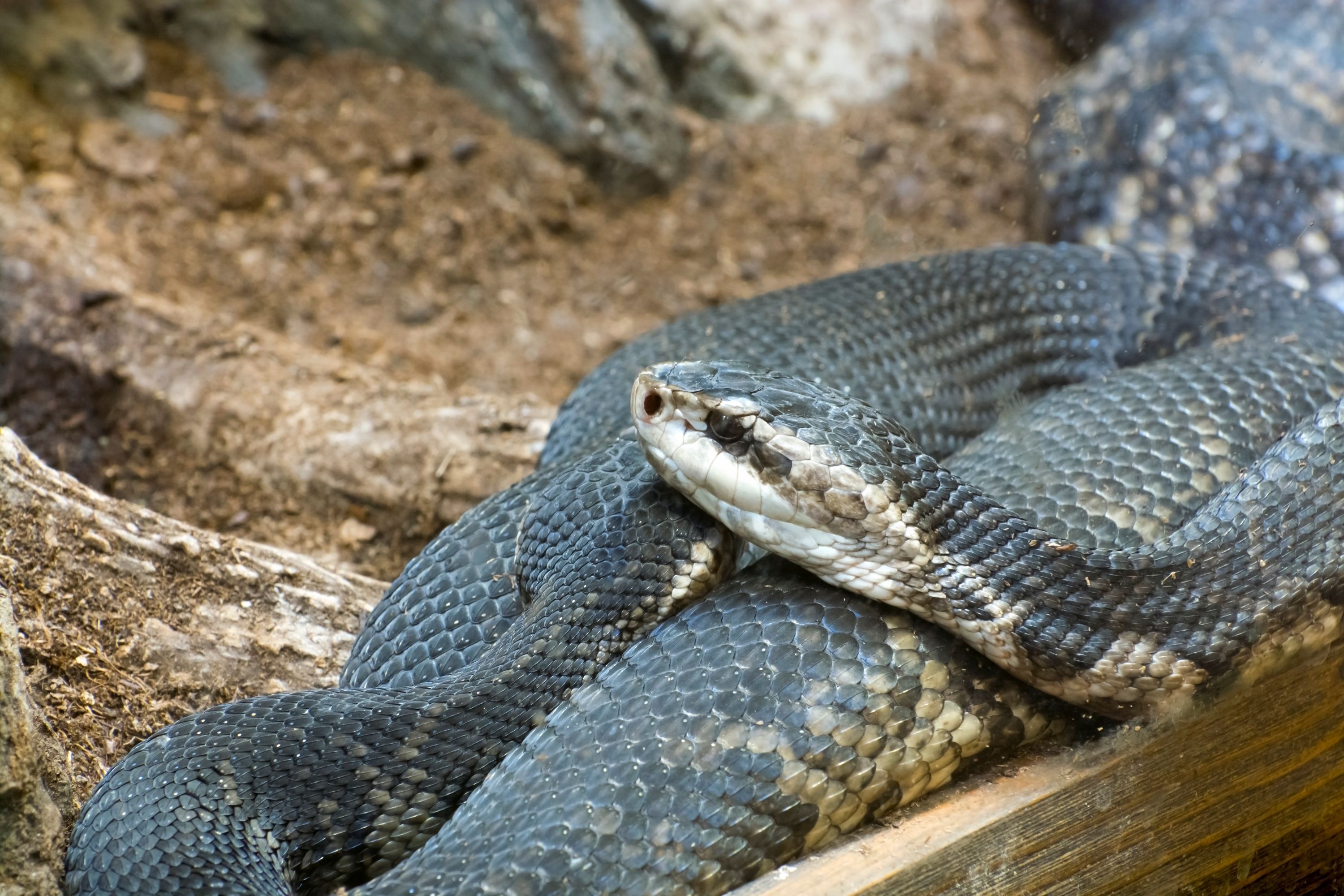Cottonmouth
(Agkistrodon piscivorus)

Description
This is the largest species of the genus Agkistrodon.Adults commonly exceed 80 cm (31 in) in length;females are typically smaller than males.Total length,per one study of adults,was 65 to 90 cm (26 to 35 in).Average body mass has been found to be 292.5 to 579.6 g (10.32 to 20.44 oz) in males and 201.1 to 254.1 g (7.09 to 8.96 oz) in females.Occasionally,individuals may exceed 180 cm (71 in) in length,especially in the eastern part of the range.Although bigger ones have purportedly been seen in the wild,according to Gloyd and Conant (1990),the largest recorded specimen of A.p.piscivorus was 188 cm (74 in) in length,based on a specimen caught in the Dismal Swamp region and given to the Philadelphia Zoological Garden.This snake had apparently been injured during capture,died several days later,and was measured when straight and relaxed.Large specimens can be extremely bulky,with the mass of a specimen of about 180 cm (71 in) in length known to weigh 4.6 kg (10 lb).The broad head is distinct from the neck,and the snout is blunt in profile with the rim of the top of the head extending forwards slightly further than the mouth.Substantial cranial plates are present,although the parietal plates are often fragmented,especially towards the rear.A loreal scale is absent.Six to 9 supralabials and eight to 12 infralabials are seen.At midbody,there are 23–27 rows of dorsal scales.All dorsal scale rows have keels,although those on the lowermost scale rows are weak.In males/females,the ventral scales number 130-145/128-144 and the subcaudals 38-54/36-50.Many of the latter may be divided.Though the majority of specimens are almost or even totally black,(with the exception of head and facial markings),the color pattern may consist of a brown,gray,tan,yellowish-olive,or blackish ground color,which is overlaid with a series of 10–17 dark brown to almost black crossbands.These crossbands,which usually have black edges,are sometimes broken along the dorsal midline to form a series of staggered halfbands on either side of the body.These crossbands are visibly lighter in the center,almost matching the ground color,often contain irregular dark markings,and extend well down onto the ventral scales.The dorsal banding pattern fades with age,so older individuals are an almost uniform olive-brown,grayish-brown,or black.The belly is white,yellowish-white,or tan,marked with dark spots,and becomes darker posteriorly.The amount of dark pigment on the belly varies from virtually none to almost completely black.The head is a more or less uniform brown color,especially in A.p.piscivorus.Subadult specimens may exhibit the same kind of dark,parietal spots characteristic of A.contortrix,but sometimes these are still visible in adults.Eastern populations have a broad,dark,postocular stripe,bordered with pale pigment above and below,that is faint or absent in western populations.The underside of the head is generally whitish,cream,or tan.Juvenile and subadult specimens generally have a more contrasting color pattern,with dark crossbands on a lighter ground color.The ground color is then tan,brown,or reddish brown.The tip of the tail is usually yellowish,becoming greenish yellow or greenish in subadults,and then black in adults.On some juveniles,the banding pattern can also be seen on the tail.Young snakes wiggle the tips of their tails to lure prey animals.This species is often confused with the copperhead,A.contortrix.This is especially true for juveniles,but differences exist.A.piscivorus has broad,dark stripes on the sides of its head that extend back from the eye,whereas A.contortrix has only a thin,dark line that divides the pale supralabials from the somewhat darker color of the head.The watersnakes of the genus Nerodia are also similar in appearance,being thick-bodied with large heads,but they have round pupils,no loreal pit,a single anal plate,subcaudal scales that are divided throughout,and a distinctive overall color pattern.
Taxonomic tree:







